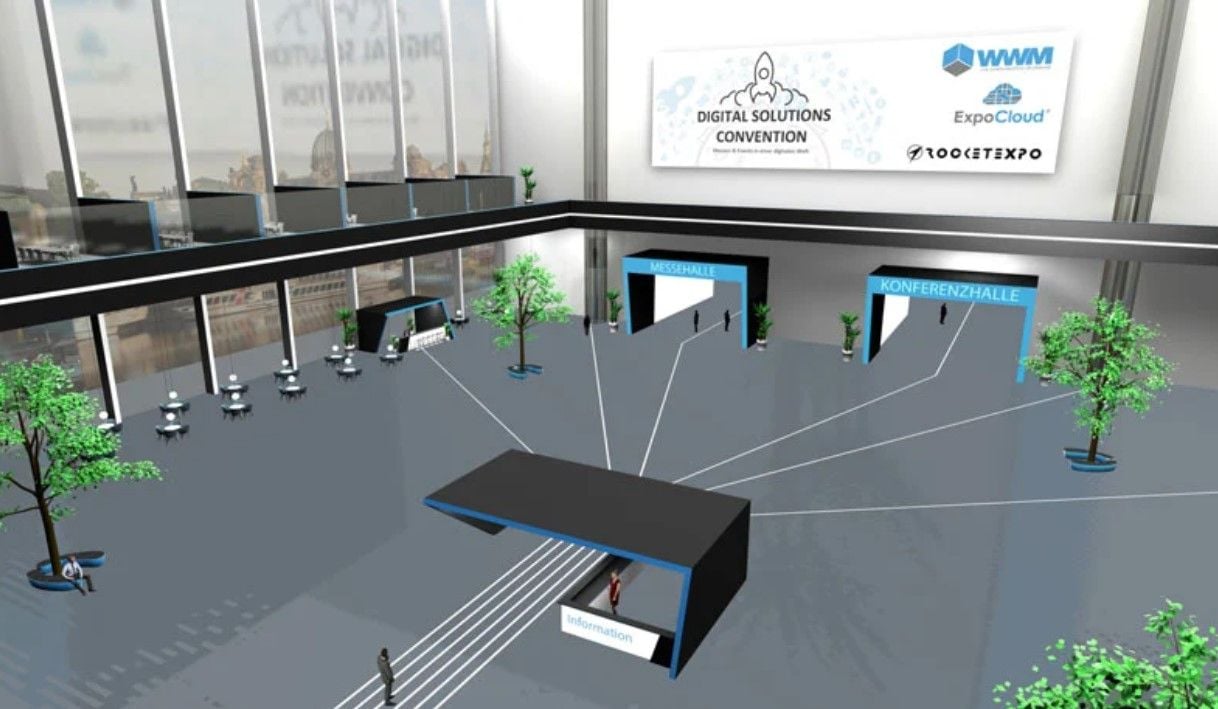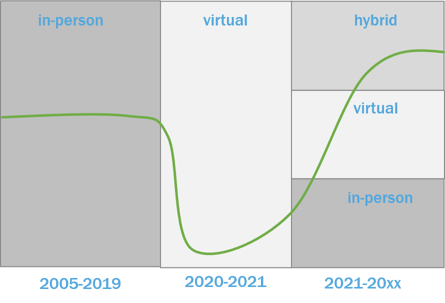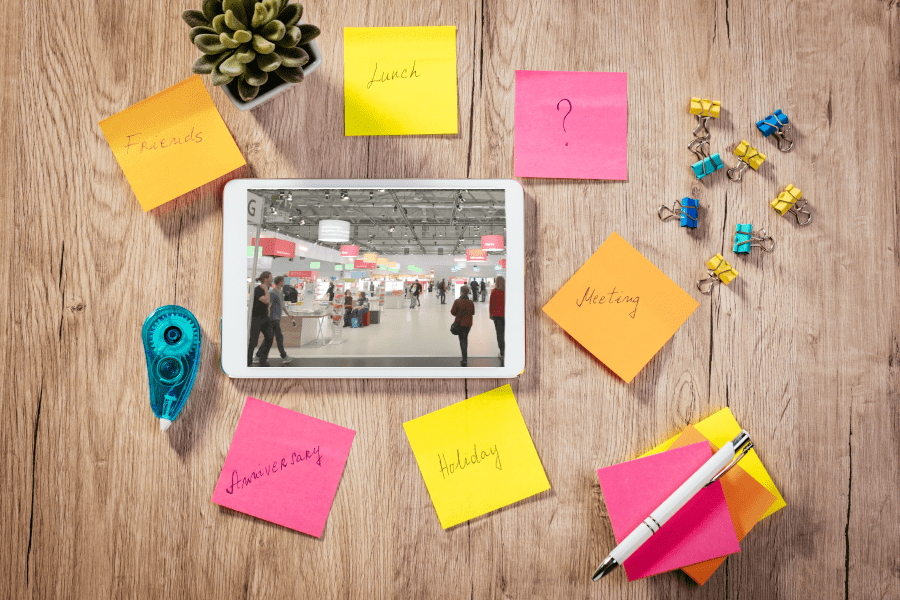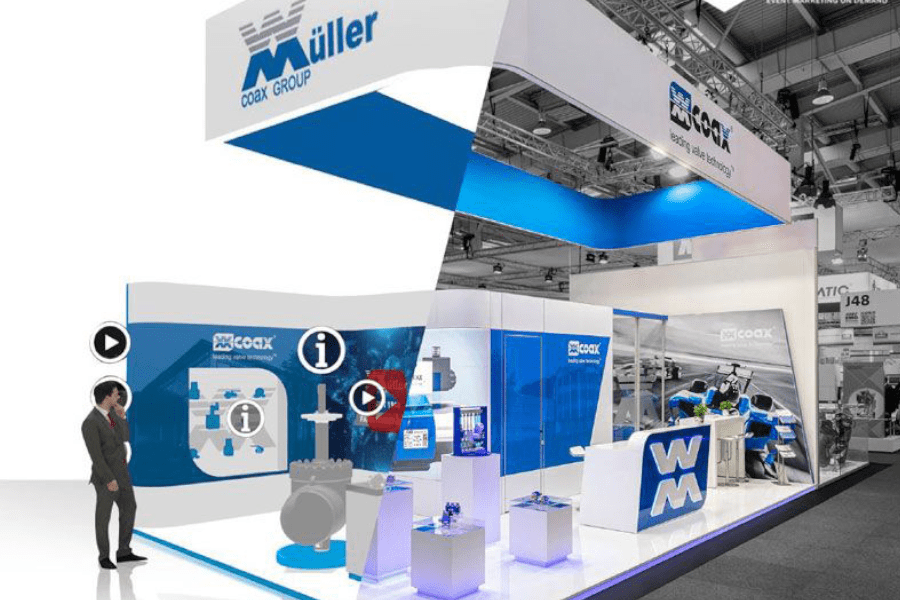Successful trade fairs after Corona
The coronavirus pandemic has really put a spanner in the works for exhibitors at trade fairs and congresses. Agile companies have reacted quickly and...

For a long time, trade fairs were considered to have been spared from digitalization. Face-to-face meetings seemed irreplaceable. Then came the coronavirus crisis and suddenly new concepts were needed. This blog article shows how a hybrid trade fair can benefit from digital and virtual solutions after the pandemic.
When most people hear the term “hybrid”, they probably think of the automotive industry, which has to reposition itself in times of climate change. But hybrid events such as trade fairs have also long been an issue, albeit for a different reason. The current coronavirus situation has forced those responsible to rethink their approach and thus accelerated the introduction of digital tools.
One thing is certain: even after the pandemic, a lot will change in the event industry. In the future, hybrid trade fairs will be created by expanding physical trade fairs with the help of virtual technology. Both forms of communication will be combined in such a way that the respective strengths are promoted and the weaknesses mitigated. Accordingly, hybrid trade fairs do not live from the contrast between real and virtual, but from synergy and symbiosis. What challenges need to be overcome? What technical infrastructure is used and how does it work?
Both real and virtual trade fairs have advantages and disadvantages. If you combine the two formats, you have a perfect symbiosis at first glance: The multisensory deficit of the virtual format can be compensated for by the live format of an event. The limited personal communication of the virtual format is perfectly complemented by the possibility of personal communication at the live event.
However, this is too short-sighted, as it must be borne in mind:
The lower costs of the virtual format do not reduce the high costs of the real format, but are in addition to them.
The shorter preparation time of the virtual format does not reduce the preparation time of the real format..
The high measurability of the virtual event does not compensate for the weakness of the same name in real events. On the contrary, in isolation it could even distort the picture and lead to false conclusions.
Consequently, the question arises as to which processes, procedures and technologies can be used to solve these deficits.
At a hybrid trade fair, the stand builder or event agency carries out the spatial planning for the real stand. How can the results of this already digital work be transferred to the virtual space?
The designs are developed with professional CAD solutions and are not optimized for use on the Internet with the standard browser of an online visitor. This bridge can be bridged with the VirtualShow solution, for example. The integrated SaaS solution offers the option of importing designs from all common CAD solutions and making them available directly on the Internet using online software. The server infrastructure is optimized for the reproduction of 3D content on the Internet. For the user of the solution, this results in a plug & play solution that can be integrated directly into their websites or platforms.
Another key advantage of the solution is that all interaction points can be easily parameterized via a user interface. This is where the virtual world can unfold its potential, as the generated virtual space is part of the Internet and can therefore communicate with all content and resources on the web. Widgets can be integrated for this purpose. Overall, the “ExpoCloud VirtualShow” solution succeeds in reducing the costs for creating the virtual space to a minimum, as the existing data from the real event is automatically transferred to the virtual space.
Take video recordings, for example: If a real format also includes presentations, these are usually recorded with digital cameras. This means that the basis for the presentation in the virtual space - the video data - is already available in digital format. In order to stream this presentation in parallel in the virtual space, all that is needed is an appropriate infrastructure that can transmit this content live on the internet. Examples of these solutions are the services of the Zoom or GoToWebinar platforms. If the use of the generated content in the virtual room is already discussed with the media technician during the planning process, the preparation time is not extended. Only the costs for the use of an appropriate high-performance live streaming platform and a few hardware components are added.
In our “always-online world”, every visitor to real events has their smartphone with them. The devices are constantly searching for hot spots to satisfy their “data thirst”. In technological terms, the search for hot spots is called a probe request. The ExpoCloud Event-Metrics technology makes use of precisely this peculiarity of smartphones. The installation of the small event metrics sensor makes it possible to generate a clear picture of visitor behavior at the trade fair stand thanks to the recording of all these probe requests from smartphones.
The new digital concepts from the coronavirus era will be just as indispensable in the future as face-to-face meetings at real trade fairs and events. The future includes hybrid events. In order to perfectly complement the limited personal communication of the virtual format with the personal communication at the live event, it is necessary to ask questions about processes, procedures and technologies in order to solve deficits and make use of a perfect symbiosis. A hybrid format therefore remains a unity of physical and virtual, as it revolves around one goal: successfully serving all stages of the customer journey.


The coronavirus pandemic has really put a spanner in the works for exhibitors at trade fairs and congresses. Agile companies have reacted quickly and...

In this blog, I describe the basics for marketing strategy decisions and focus on digital trade fair formats and trade fair stands, such as hybrid...

Update: 04.11.2022 Trade fairs are a very important marketing tool for companies, especially in the B2B sector. They are suitable for maintaining...